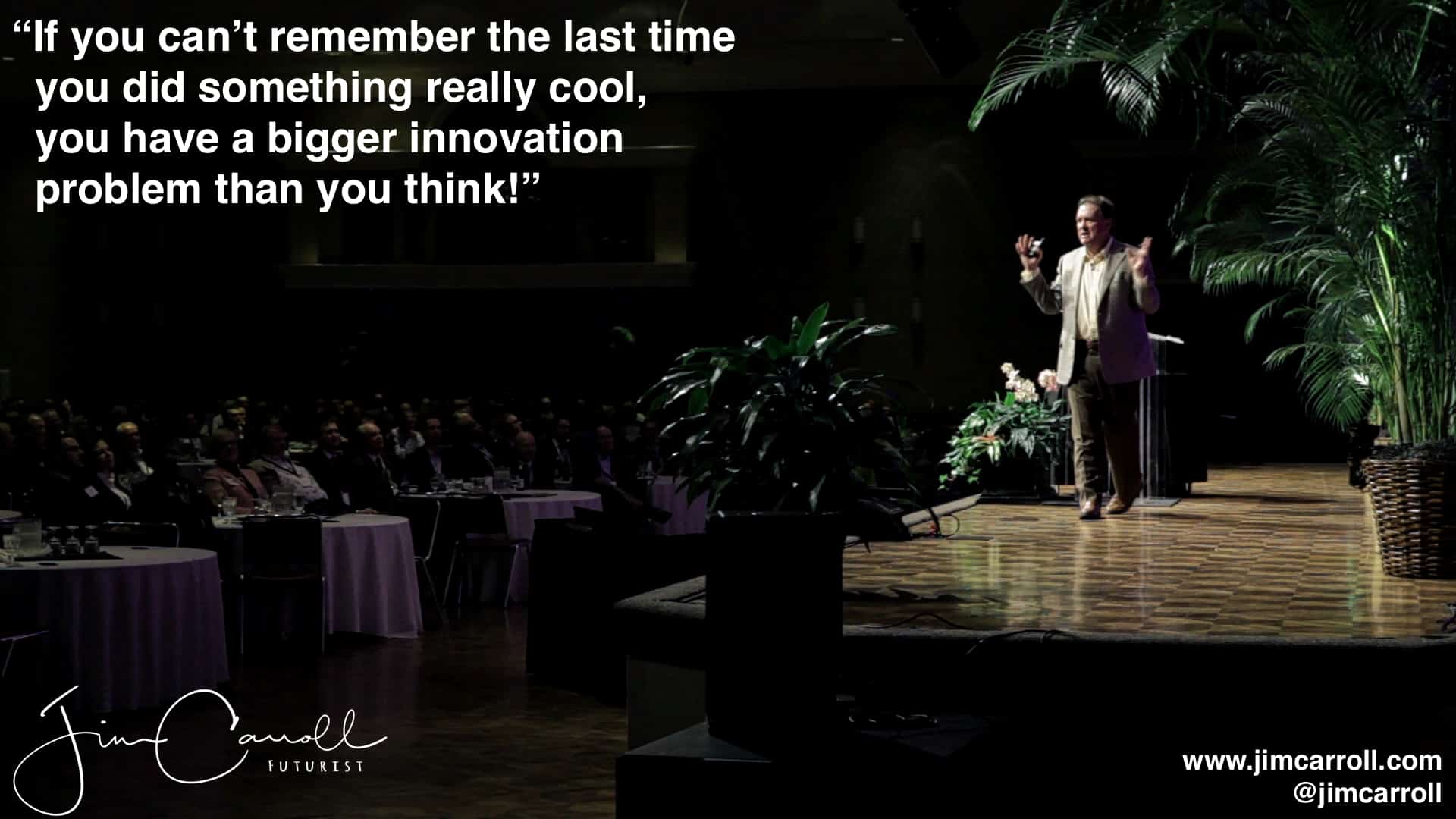I had a conference call with a client yesterday with respect to an upcoming leadership meeting; I’ll be helping the organization think about some of the barriers they have towards innovation, and what they need to do to overcome these challenges.
As we were talking, I scribbled down a short list of some of the issues that I was identifying with them.
- tradition. Some organizations are too caught up with the past, which causes them to lose sight of opportunities for the future.
- culture. Often corporate culture can stifling, if not deadening. Some build up an organizational sclerosis which eventually clogs up their ability to try to do anything new.
- indecision. If an organization can’t make bold moves, it certainly can’t achieve breakthroughs!
- organizational memory. It causes people to focus on the past instead of the future.
- bureaucrats. Their job is simply to shut down ideas, get people to fill out forms, and reduce the everyday work experience to a series of mind-numbing tasks.
- stock markets. They cause too many senior executives to spend their time thinking about short term hits that can keep the stock price up, rather than working on the big bets that can provide for transformative opportunities. No wonder so many organizations are going private!
- job descriptions. They reduce the role of people to a narrowly defined set of activities and small goals. I’ve encountered few organizations where innovation success is actually enshrined into the job description, let alone the HR reward system.
- a failed radar. Too many organizations don’t have an internal future-mechanism that helps them to spot future threats and opportunities.
- arrogance. As in, we know better than anyone else! (I’ve met some CEO’s of some pretty big companies that go in this category!)
- mission statements. They can be a great thing to give everyone an overall sense of purpose. On the other hand, most organizations don’t update and refresh them, which means that in many cases, the mission statement has nothing to do with what the organization actually needs to be doing.
- a culture of inaction. Doing nothing has become the norm!
- strategic planning. Some organizations get so caught up in the process of strategic planning that they never get beyond the planing statge. Where do you think the phrases “analysis paralysis” comes from — organizations who are busy analyzing things as part of their planning process!
- lone wolves. They’re often folks who can lead innovation, since they can have the brilliant ideas that are the spark for greatness. On the other hand, they can become so blinded by their belief that they refuse to accept the ideas and insight of anyone else, forgetting that collaboration is often at the root of all great innovations
- history and legacy. What made you successful in the past won’t work for you in the future.
That’s a short list of some of the enemies of innovation – there are lots more!





GET IN TOUCH
Jim's Facebook page
You'll find Jim's latest videos on Youtube
Mastodon. What's on Jim's mind? Check his feed!
LinkedIn - reach out to Jim for a professional connection!
Flickr! Get inspired! A massive archive of all of Jim's daily inspirational quotes!
Instagram - the home for Jim's motivational mind!